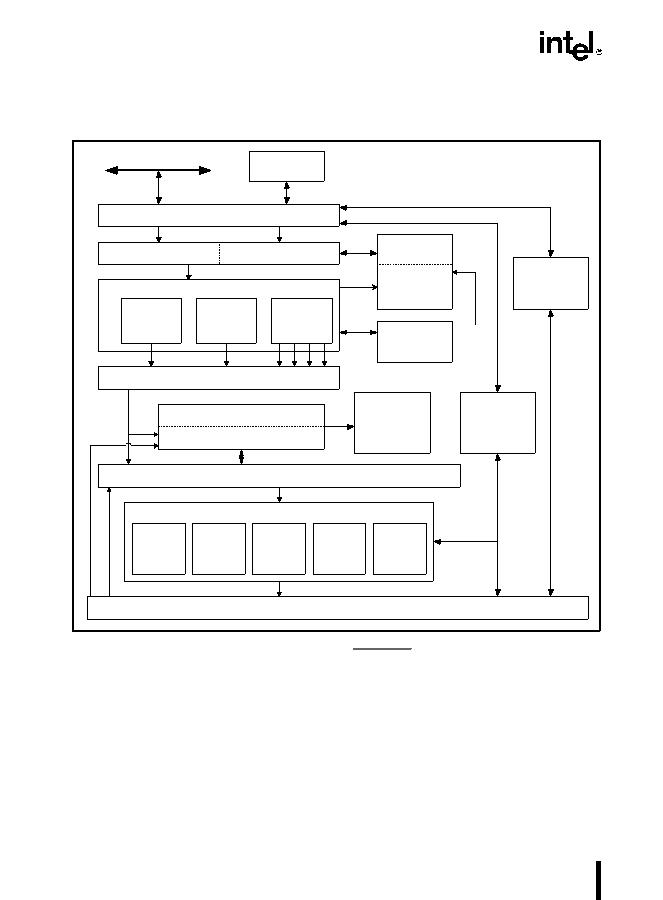2-10
INTRODUCTION TO THE INTEL ARCHITECTURE
blocking. The L1 data cache automatically forwards a cache miss on to the L2 cache, and then,
if necessary, the bus interface unit forwards an L2 cache miss to system memory.
Memory requests to the L2 cache or system memory go through the memory reorder buffer,
which functions as a scheduling and dispatch station. This unit keeps track of all memory
requests and is able to reorder some requests to prevent blocks and improve throughput. For
example, the memory reorder buffer allows loads to pass stores. It also issues speculative loads.
(Stores are always dispatched in order, and speculative stores are never issued.)
Figure 2-2. Functional Block Diagram of the
P6 Family
Processor Microarchitecture
Bus Interface Unit
Simple
Instuction
Decoder
Simple
Instuction
Decoder
Complex
Instuction
Decoder
Register Alias Table
Retirement Unit
Reorder Buffer (Instruction Pool)
Reservation Station
Internal Data-Results Buses
SIMD FP
Unit
(FPU)
Floating-
Point Unit
(FPU)
Integer
Unit
Integer
Unit
Memory
Interface
Unit
Retirement
Register File
(Intel Arch.
Registers)
Data Cache
Unit (L1)
Memory
Reorder
Buffer
Microcode
Instruction
Sequencer
Next IP
Unit
Branch
Target
Buffer
L2 Cache
Instruction Decoder
Instruction Fetch UnitInstruction Cache (L1)
System Bus (External)
Cache Bus
Execution Unit
From
Integer
Unit

